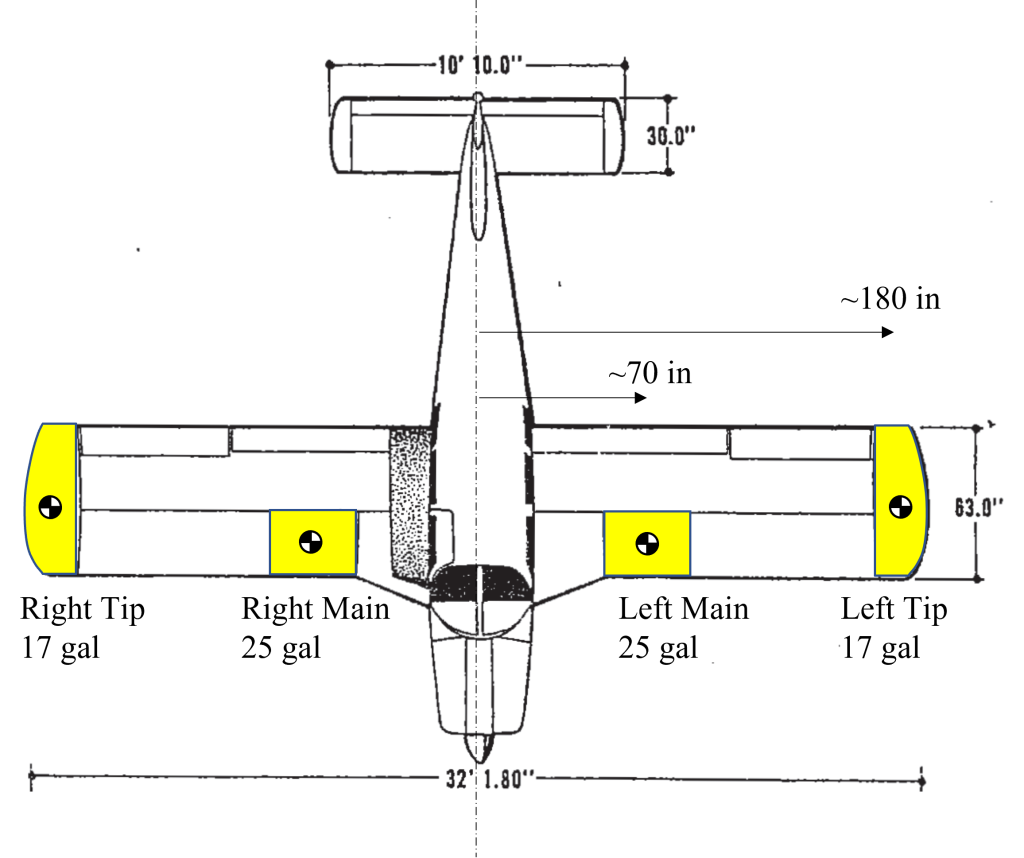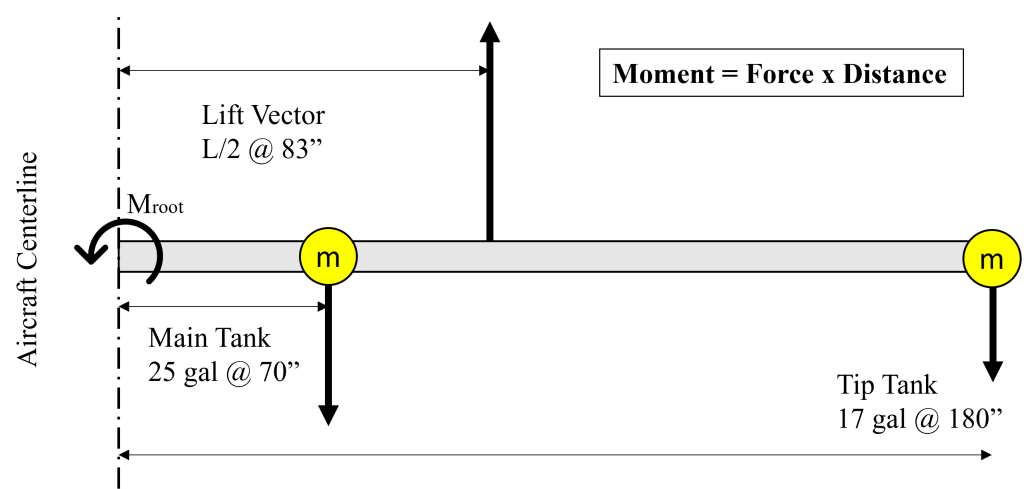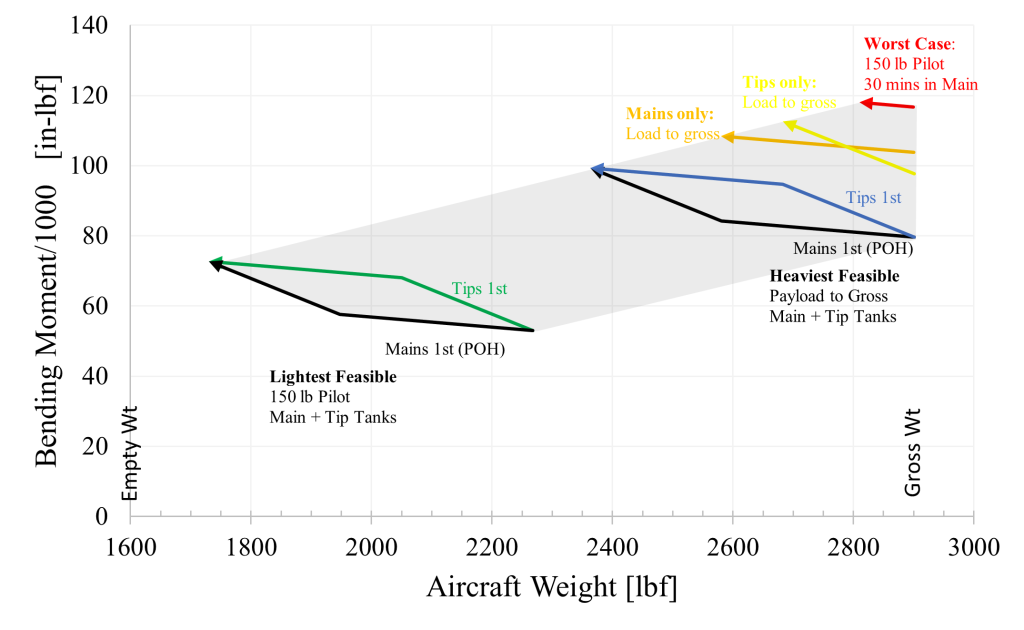The Piper Cherokee PA-28-235 recommends the use of the tip tanks last. The purpose of this note is to estimate the reduction in wing root bending moments associated with this strategy. The PA28 model has a known AD history with wing root cracks; reducing the bending reduces the stress and increases the structural life. The POH for a C model says:

To familiarize yourself with the fuel available on the aircraft, the planform view of the aircraft from the POH with fuel tank overlays is illustrated in Figure 1. The aircraft has 4 tanks: two 25 gallon main tanks and two 17 gallon tip tanks for a total of 84 gallons of fuel. The main tanks are approximately 70 inches outboard from the centerline and the tip tanks are approximately 180 inches outboard.

Aerodynamics: Using the process described in https://charles-oneill.com/blog/cherokee-tapered-wing-float/, the wing’s effective spanwise aerodynamic center is located at approximately 43% of the span. To remain conservative, we ignore the structural weight of the wing. The simplified configuration is given in Figure 2.

Summation of moments about the root (left side) gives the following equation. When substituting for the wing panel’s lift (L/2) and the weight of fuel, the overall moment at the wing root is

Plotting this wing root bending moment (per g) over the aircraft’s envelope provides a visual comparison of the differences in loading and operational techniques. All feasible loading and operating conditions lie within the gray shaded region. The worst case (red color) is a light 150 lbf -but perhaps not so bright- pilot with VFR minimum fuel and a maximum payload to achieve gross weight of 2900 lbs; notice that the Cherokee does NOT appear to have a zero fuel weight limitation (ZFW). On the other extreme, a light 150 lb pilot with no payload results in the conditions at lower left, where the POH loading suggestion (main 1st, then tips) is the lower black line. The green line shows the results when tips are fed first until dry and then the mains are fed.

Conclusion 1: Adding fuel reduces wing bending at the root. This immediately shows shows that the tip fuel is almost 5 times more effective at reducing the bending moment per gallon.
Conclusion 2: Each gallon of main fuel is structurally equal to a reduction in payload weight of 4 pounds.
Conclusion 3: Each gallon of tip fuel is structurally equal to a reduction in payload weight of 21 pounds. Adding fuel tip tanks (17 gallons) acts to reduce fatigue stresses similar to reducing the payload weight by 360 pounds. This is not a negligible amount.
Conclusion 4: The maximum benefit of feeding the mains before the tips is approximately a 15% reduction in bending moment.
Statement 1: This analysis does NOT include the effects of maneuvering speed. Please refer to the appropriate POH for guidance and remember that Va reduces at lower weights.
Statement 2: The 15% reduction in bending moment contributes FAR more than 15% to the aircraft lifespan. 15% is in fact a substantial number. Further analysis of this fact will be conducted later (See Cherokee 235 Tip Tanks and Fatigue).
Conclusion: The Piper POH’s suggestion to use the main tanks first does have a substantial structural fatigue benefit.
